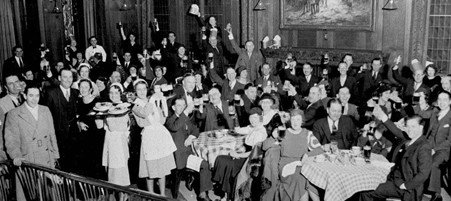History of the 1920s Speakeasies
Just over 100 years ago, the birth of the ‘Jazz Age’ occurred and secret Speakeasies were beginning to pop-up all-over America. Upon entrance, you would be greeted with the sound of laughing, the clinking of drinks and most importantly Jazz. This new way of life allowed for social interactions to occur between people of different race, ethnicity, gender and socioeconomic statuses and without them, we may not have gotten where we are today in terms of integration.
What is a Speakeasy and why were they created?
Throughout the early years of the 20th Century, America was in turmoil in terms of political and social reform with more and more people rebelling against the traditional ways of life which stemmed from the Victorian times. At the beginning of the decade known as the ‘Roaring Twenties’ the United States of America had just entered the Prohibition era where liquor and other alcoholic beverages were illegal between the years of 1920 and 1933. This resulted in the formation of illicit Speakeasies and at one point, there were thought to be over 100,000 Speakeasies in New York alone.
The phrase, ‘Speakeasy’ originates from a term that bartenders used where people needed to, “speak easy” (quietly), when ordering at the bar in order to not draw attention to the prohibited act of buying alcohol. In order to gain access to these illicit bars, a password, specific handshake or secret knock was required. Furthermore, slang words for alcohol such as ‘coffin varnish,’ ‘monkey rum’ and ‘tarantula juice’ were created to fool police and neighbours.
As well as the term, ‘Speakeasy’, these illegal taverns were also called “Blind Pigs” or “Gin Joints” and were often set up by crime members such as the infamous Al Capone. The venues ranged from Jazz clubs with dancefloors to dark backrooms, basements and a new Prohibition-created venue: The House Party.
Due to the fact that alcohol was illegal, organisers of such events had to come up with inventive ways to transport and store the goods. Many Speakeasies operated under the guise of being a pharmacy and claimed alcohol was being sold for, “medicinal purposes.” Others used false books, coconut shells, garden hoses and even prams with their babies perched on top to transport the illegal liquor from one event to another.
1920s Prohibition Speakeasy
The Significance of Speakeasies for Women
Before World War I finished in 1918, women and young girls were expected to uphold traditional Victorian values in terms of the way they dressed, spoke and behaved in public and within the home. However, just six months after the Prohibition law came into force in 1920, women got the right to vote which was a long-awaited pivotal moment and gave them autonomy over the way they expressed themselves.
Prior to the setup of Speakeasies and this new way of life, women would have had no place in bars unless they were a showgirl; yet now exposed to this easy access, social and liberal change were in full swing in the “Jazz Age.” With their short skirts, bobbed hair and the sudden ability to drink copious amounts of cocktails, the concept of the ‘Flapper’ was born. The gender gap was practically non-existent within these social events as men and women drank, danced and smoked together, which was something America had never seen before and put Jazz Music to blame for the ‘immorality’ this newfound freedom gave women.
1920s Flapper Girls
How did the Charleston play a part in Speakeasies?
The Charleston first became popular in America and was enjoyed by many young people throughout the 1920s and was danced to ragtime Jazz music which quickly became a craze all over the world. The Charleston became particularly popular with rebellious young women, known as ‘Flappers’ and the dance was a physical representation of how young people (girls in particular) wanted to express themselves.
Speakeasies played an integral role in keeping The Charleston dance culture alive because it was banned in regular bars, clubs and dance halls as it was deemed too scandalous and exuberant..
Charleston Dancing at a Speakeasy in Harlem 1920
If you want to find out more about what a Speakeasy would look like now, 100 years on, then check out MyCharleston’s blog MyCharleston Speakeasy 2021
If you fancy giveing the Charleston dance ago, take a look at our in-studio and online courses.
By Eleanor O’Donnell



